50+ Sample Orientation Checklist Templates
-
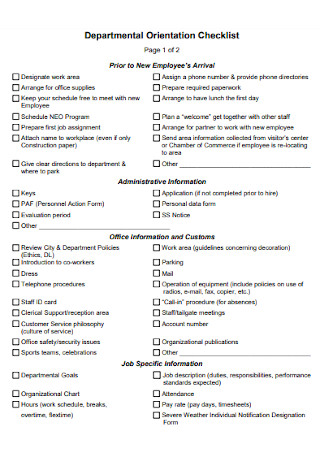
Departmental Orientation Checklist
download now -
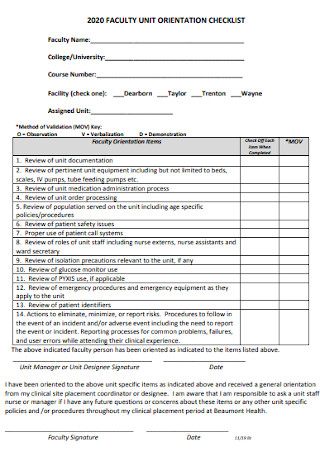
Faculty Unit Orientation Checklist
download now -

Hearing Aid Orientation Checklist
download now -
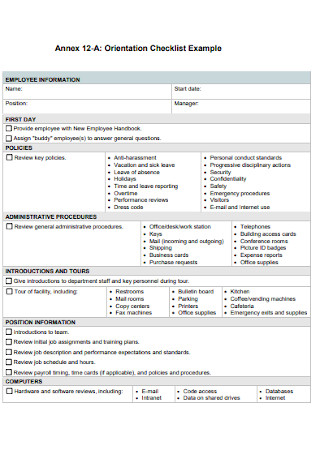
Orientation Checklist Example
download now -
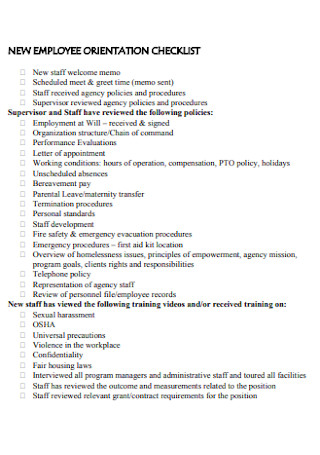
New Employee Orientation Checklist
download now -
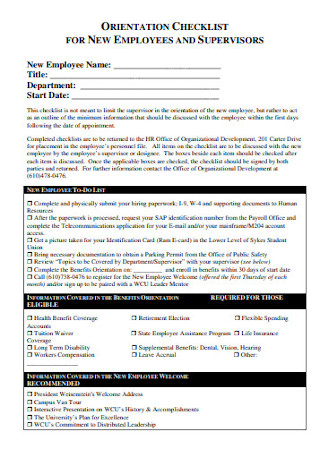
Orientation Checklist for Supervisors
download now -
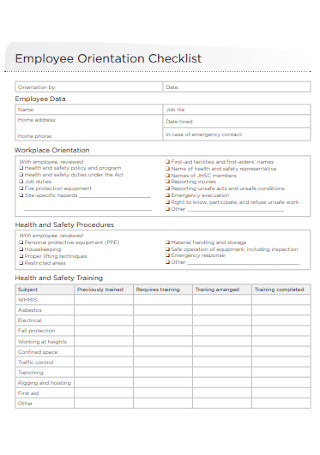
Employee Orientation Checklist
download now -
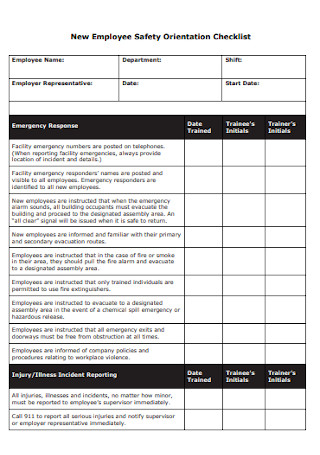
Employee Safety Orientation Checklist
download now -
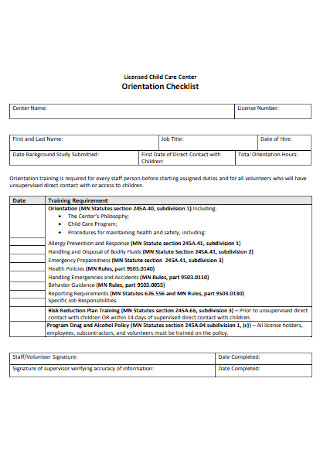
Child Care Center Orientation Checklist
download now -
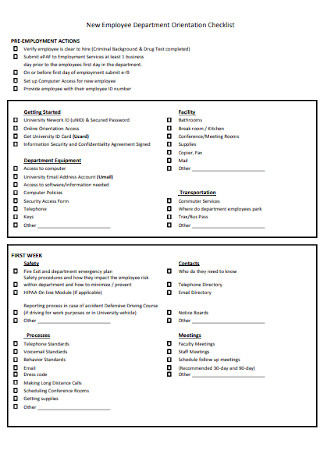
Employee Department Orientation Checklist
download now -
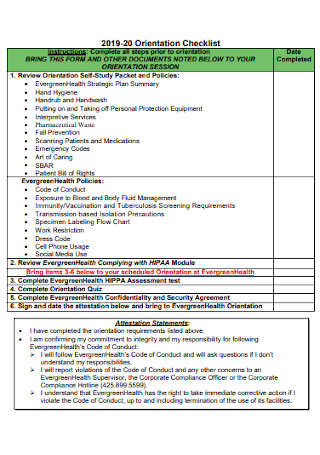
Health Orientation Checklist
download now -
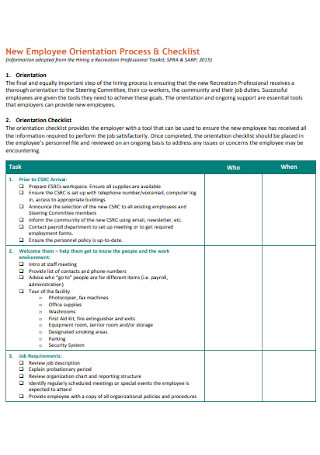
Employee Orientation Process and Checklist
download now -
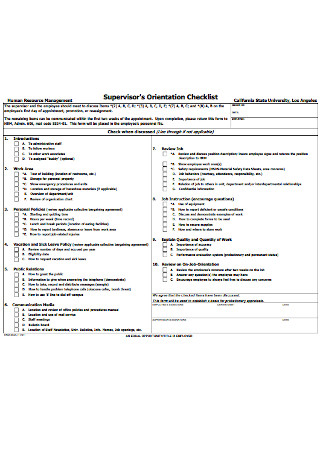
Supervisors Orientation Checklist
download now -
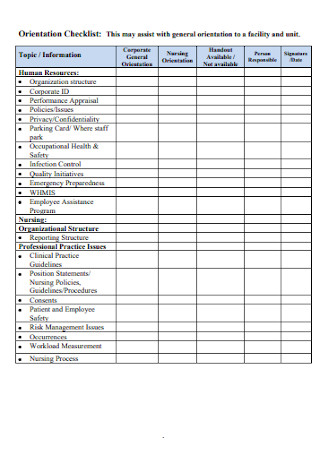
Orientation Checklist Format
download now -
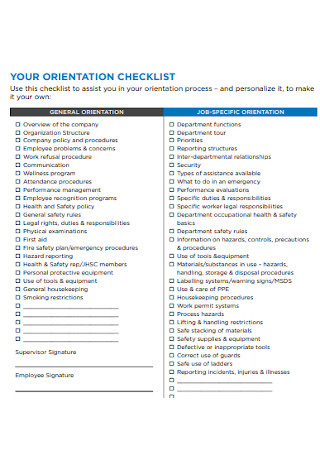
General Orientation Checklist Template
download now -
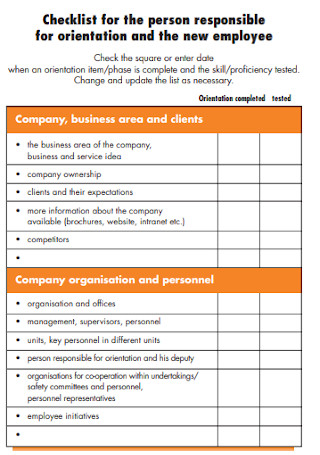
Work Orientation Checklist
download now -
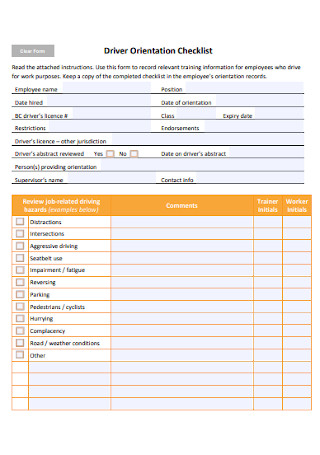
Driver Orientation Checklist
download now -

Site Orientation Checklist
download now -
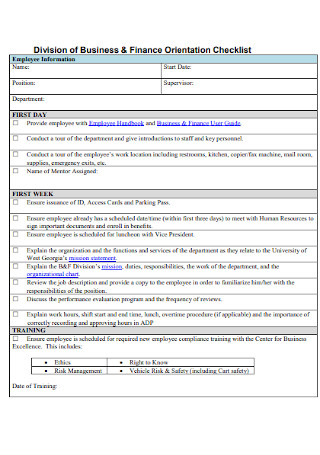
Finance Orientation Checklist
download now -
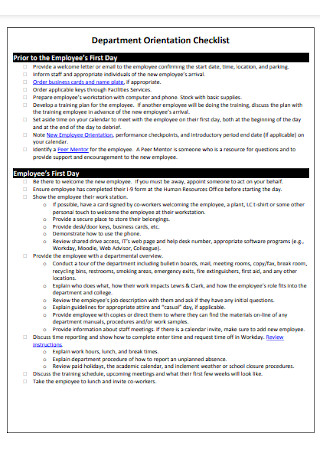
Department Orientation Checklist
download now -
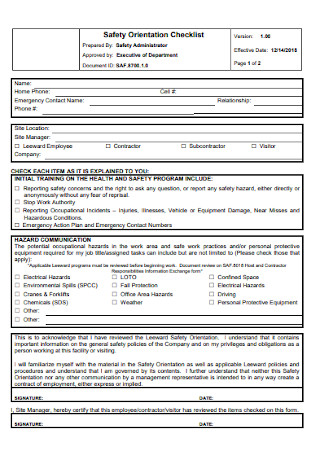
Safety Orientation Checklist
download now -
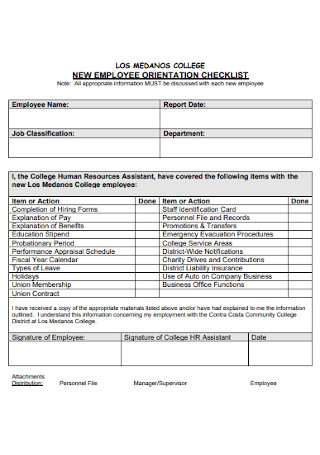
College Employee Orientation Checklist
download now -
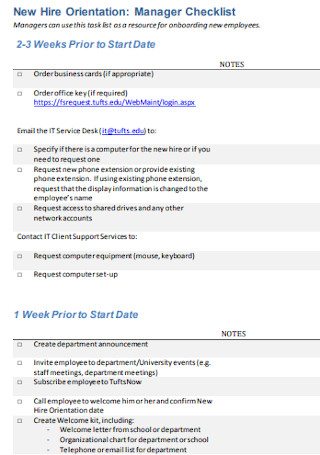
Manager Orientation Checklist
download now -
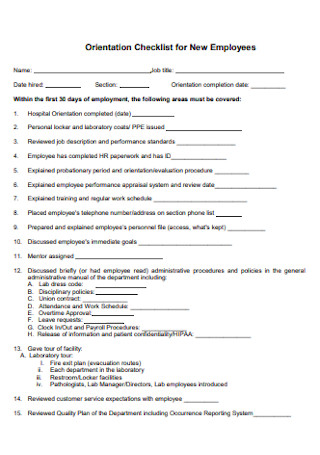
Orientation Checklist for New Employees
download now -
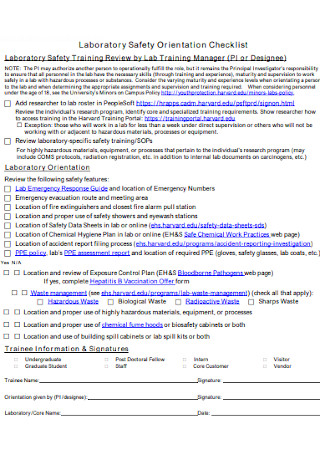
Laboratory Safety Orientation Checklist
download now -
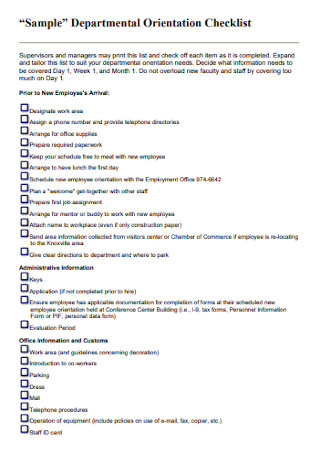
Sample Departmental Orientation Checklist
download now -
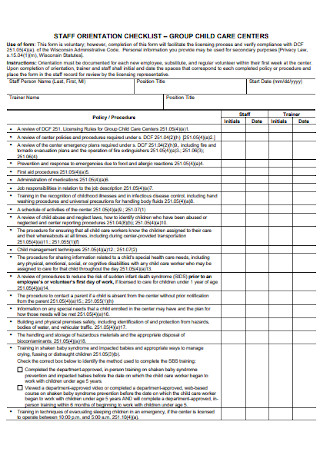
Staff Orientation Checklist
download now -
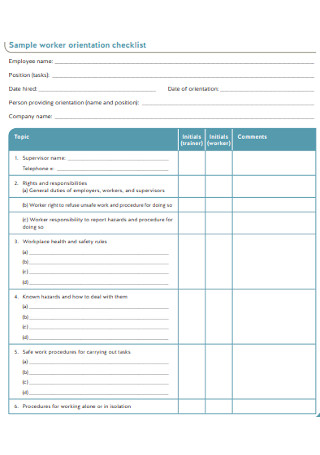
Sample Worker Orientation Checklist
download now -
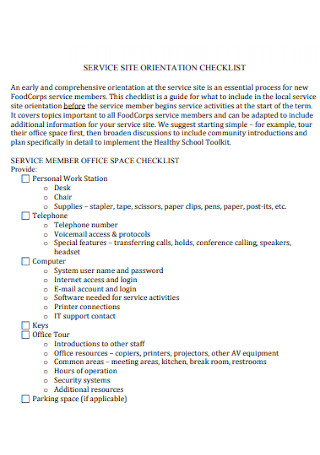
Office Board Orientation Checklist
download now -
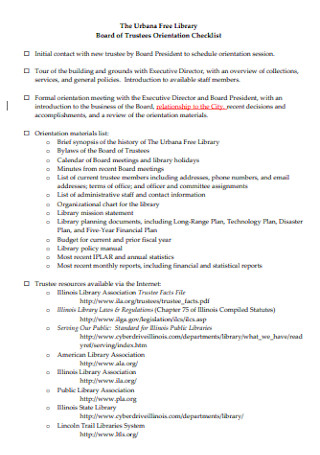
Board of Trustee Orientation Checklist
download now -
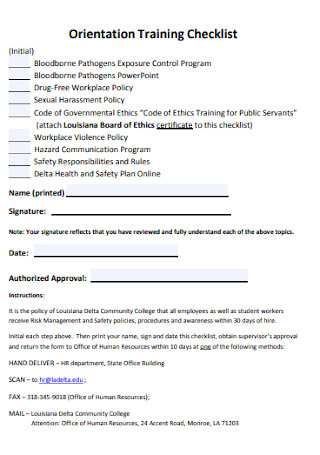
Orientation Training Checklist
download now -
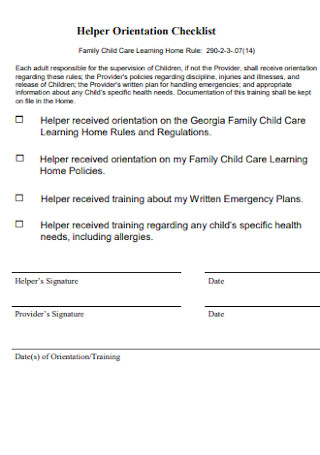
Helper Orientation Checklist
download now -
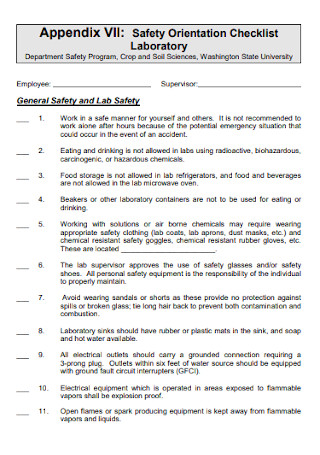
Laboratory Orientation Checklist
download now -

On Site Orientation Checklist
download now -
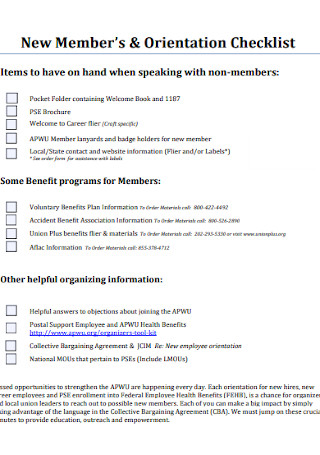
New Members and Orientation Checklist
download now -
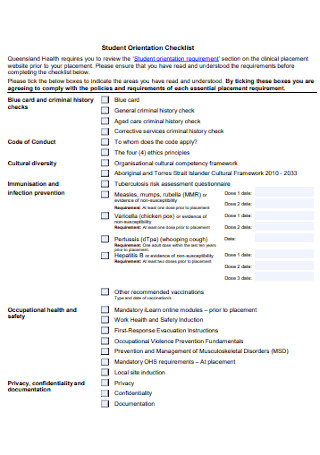
Student Orientation Checklist
download now -

Intern Orientation Checklist
download now -

Initial Orientation Checklist Template
download now -
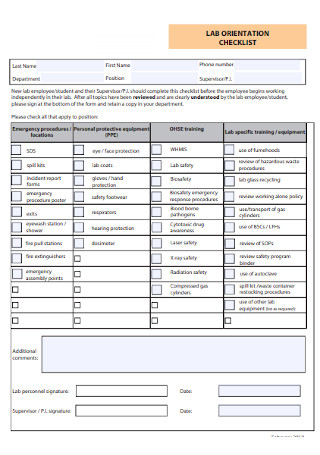
Lab Orientation Checklist Template
download now -
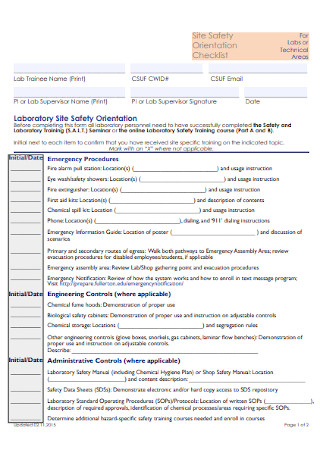
Site Safety Orientation Checklist
download now -
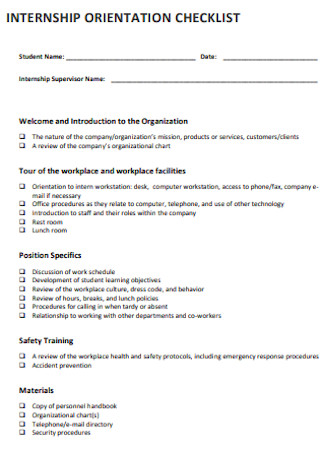
Internship Orientation Checklist Template
download now -

General Student Orientation Checklist
download now -
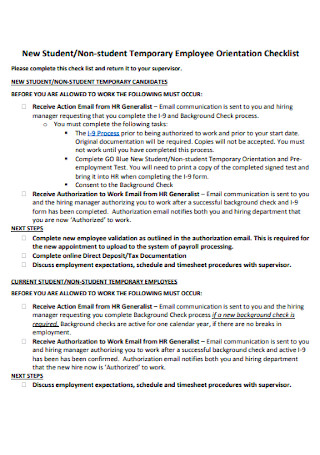
Non-student Temporary Orientation Checklist
download now -

School Orientation Checklist
download now -
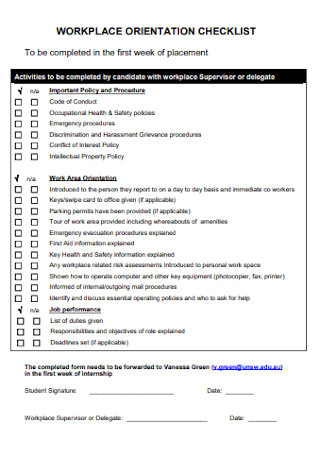
Workplace Orientation Checklist
download now -
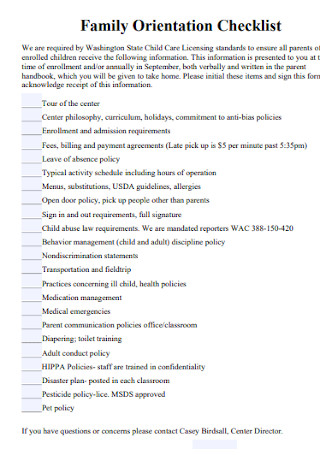
Family Orientation Checklist
download now -
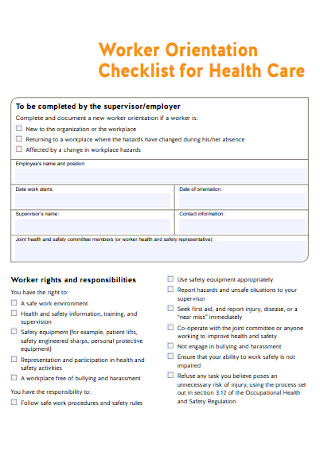
Health Care Worker Orientation Checklist
download now -
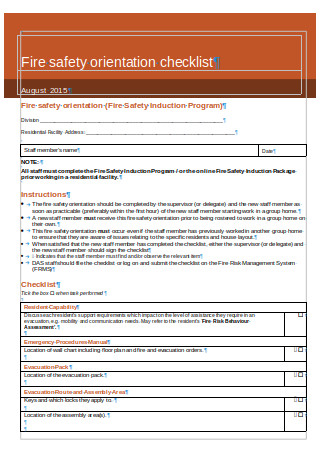
Fire Safety Orientation Checklist
download now -

Laboratory Orientation Checklist
download now -

Residential Construction Orientation Checklist
download now -
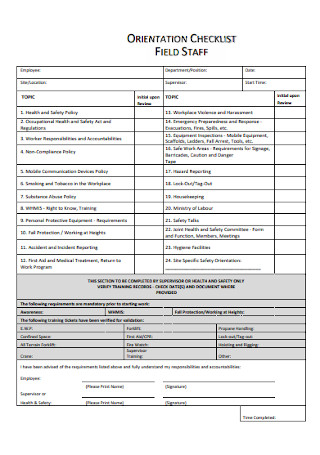
Field Staff Orientation Checklist
download now
FREE Orientation Checklist s to Download
50+ Sample Orientation Checklist Templates
What Is an Orientation Checklist?
What Are the Elements of an Orientation Checklist?
How to Make an Orientation Checklist
FAQs
What does a newbie benefit from an orientation?
What are some of the orientation checklist must-haves?
Why is onboarding necessary?
What Is an Orientation Checklist?
Orientation is a process where an organization welcomes a new hire on the very first day of work. Besides employment, orientation also applies to welcoming a visitor to your business, a medical intern to your laboratory, a housekeeping specialist to your home, and so much more. But no matter who you orient and how you do it, what matters most is that you process it in an organized manner. And this is where orientation checklists are at play—your ultimate guide to ensure that new members in an organization are given proper and efficient orientation.
Based on a survey, 88% of employees refused to believe that their organizations managed to onboard properly while only 12% agreed that the company handled onboarding well.
Meanwhile, Glassdoor reported that 95% of organizations admitted that they had bad hires per year.
On another note, TalentLMS said that 69% of employees would gladly stay in an organization for about three years if their onboarding experience was great.
Why Are Orientation Checklists Necessary?
Orientation checklists are needed to be prepared. So the next time you handle orientation to a new member, teammate, or employee, the process already runs smoothly. In orientation, you may need to discuss the new employee’s tasks, company policies, and certain adjustments. And a long task checklist could make you forget certain items. You will be confident about your performance in orienting people with a guide or reference, which is the orientation checklist.
Furthermore, it was reported that 95% of organizations have had bad hires per year. Factors leading to that may come from failing to find the right employee or failing to orient and train the employee. That data alone tells us to be smart right from the start of orienting new employees so they will really be guided and be part of your company’s successful team. And when you judge your performance to onboard with and without an orientation checklist, expect the competency to increase with the checklist.
What Are the Elements of an Orientation Checklist?
Yes, orientation checklists are important. But what exactly can be found inside such lists? How the onboarding committee handles the orientation would vary but there are common characteristics noted as well. So in this section, we will introduce you to the common elements inside a standard orientation checklist.
How to Make an Orientation Checklist
Now for the important part of the article. create your own orientation checklist. Do not feel intimidated because the process is quite easy. And now that you already know about the orientation checklist’s meaning, significance, and elements, then making the said list makes you even more ready. You only have to follow six basic steps, and they are as follows:
Step 1: Understand How the Orientation Works
First things first, familiarize how to do the orientation. It is not right to proceed immediately in making the checklist without fully understanding how the process even works. Indeed, you already know that your purpose is to orient. But be specific on how that happens. Surely, the manager, HR, or team leaders would have an idea about how to manage it. So you can have them as your source. Take notes about what is done in the orientation from start to finish until you are ready to finalize an official orientation checklist.
Step 2: Find a Sample Template
Things could not have gotten any easier since we have many sample orientation checklist templates up for grabs. Have you seen each sample above? Start choosing your preferred template. And whichever you choose there can be edited afterwards. That means you need not stick to generic-looking checklists. Be sure to personalize the format, design, content, and other factors. Thanks to such templates, you can come up with an orientation document within minutes only.
Step 3: Insert the Important Elements
In your chosen template, you will slowly complete the necessary elements to add. Can you still recall every element of an orientation checklist that was tackled earlier? Insert them one by one. From the title down to the closing statement, you should have them to complete your list. You can also take out or add more elements since your preference is surely welcome. Bear in mind that lacking the important elements might be the reason your checklist could fail to work.
Step 4: Organize Everything to Add
Do not blindly add each element without organizing the details. You have to arrange your content as well. And the best way to manage that is by creating labels, categories, tables, and charts. How you wish to manage this is also up to you. In the elements explained earlier, the tasks are even arranged properly where there is one category for the policies, another for the employee’s job, and so forth. The point is a sense of organization will make the whole checklist easier to follow.
Step 5: Focus on Practicality
Look back into the details you have listed. Are you sure that the tasks to do for the orientation can really be managed within your expected timeframe? Imagine a two-week orientation, for example. What if the first week was crammed with too many tasks yet the second week hardly has any task for the orientation? Balance it instead. Be practical because maybe the new employees get bombarded with too many tasks right away when they are still in the process of adjusting.
Step 6: Use an Easy-to-Follow Design
Finally, look into your checklist’s design. Is it easy to follow? And after a thorough evaluation, do you think sticking to that checklist will really help you ace the orientation process smoothly? If the answer is no, then make the necessary changes for improvement. Also, review everything if you are satisfied with the orientation checklist’s outcome. What matters most is that you are confident with that tool to be your official reference during orientations. If your answer is yes, launch it.
FAQs
What does a newbie benefit from an orientation?
Orientation helps newbies complete the tasks obligated of them to do, learn about the business regulations, adjust to the new workplace, and prep them to fulfill the job. And if the one assigned to orient newbies has an orientation checklist, rest assured, the process will run efficiently and effectively.
What are some of the orientation checklist must-haves?
Indeed, each company varies on how to manage orientation. But some of the important ones you must have are the following:
- Background checking
- Discussion of the job basics
- Introduction to the team
- New hire paperwork completion
- Quick tour
- New hire training preparation
Why is onboarding necessary?
Onboarding is helpful. How so? According to a research survey from TalentLMS, 69% of employees would most likely stay in an organization for three years minimum if they had an excellent onboarding experience. And that is just what companies would want to keep their employees.
Optimize your next new-hire orientation with the help of sample orientation checklist templates. And since each template is not just a one-content-fits-all kind of document, there is definitely some room to customize it. So to prevent forgetting what to do or being unsure if you were really a reliable buddy to help newbies properly on the onboarding process, depend on professionally-made orientation checklists instead.
